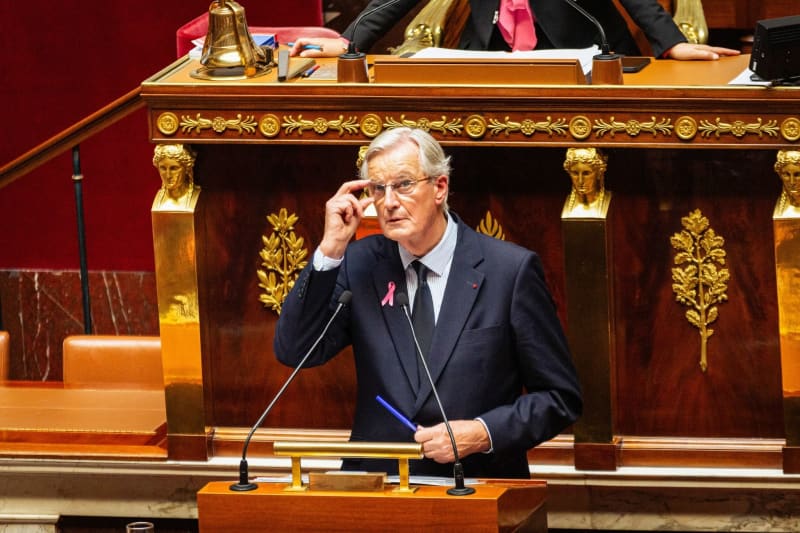France is currently witnessing a significant political shift with the establishment of a new centre-right government led by Prime Minister Michel Barnier, which has introduced a stringent austerity budget in an effort to manage the country’s high national debt. This plan was unveiled after a Cabinet meeting on a Thursday, outlining an ambitious goal of saving and generating an additional €60 billion (approximately $65.5 billion) in the upcoming fiscal year. The government’s strategy primarily comprises two-thirds of its financial targets being met through spending cuts, while the remaining third derives from tax increases targeting profitable corporations and affluent households. This austerity initiative comes as the pressure from the European Commission mounts due to France’s excessively high deficit, prompting the issuance of a deficit procedure against France. To comply with EU mandates, France is required to present a consolidation plan to Brussels by the end of October.
The current budgetary scenario anticipates that France will close the existing budget deficit, projected at 6.1% for the current year. The government plans to decrease this figure to 5% by the year 2025, ultimately striving to lower it below the EU’s stipulated limit of 3% by 2029. The austerity budget is not without its challenges, as it is rapidly encountering opposition within parliament. Criticism has arisen not only from the left but also from right-wing nationalist factions, illustrating a spectrum of discontent regarding the proposed financial measures. This growing unrest signals a potential division within the political landscape, complicating the government’s efforts to implement the planned budget adjustments effectively.
Significantly, the proposed austerity measures are facing skepticism even from within Barnier’s own party. Several members have voiced their disapproval of the degree of budget cuts outlined in the initiative, indicating that there may be discontent and lack of consensus among the ruling party lawmakers. This fragmentation poses a challenge for Barnier, who must strive to maintain party unity while simultaneously addressing the fiscal concerns laid out in the austerity budget. Furthermore, the High Council of Public Finance has weighed in, offering a critical assessment of the government’s sustainability plans, deeming the growth forecasts underlying the budget as unrealistically optimistic. This external criticism adds another layer of complexity, as it questions the feasibility of achieving the ambitious financial objectives.
Given that the government lacks a parliamentary majority, attaining approval for the austerity measures could become a contentious power struggle. Barnier may find it necessary to negotiate amended versions of the budget with opposition parties to secure passage. Alternatively, the government might resort to executing its budget through a special provision within the constitution, enabling it to bypass the legislative process. This scenario illuminates a challenging political terrain, where the government needs to navigate competing interests and expectations while aiming for fiscal sustainability. The intricacies of this negotiation process will be crucial in determining the fate of the austerity budget.
As the political landscape heats up, the likelihood of street protests opposing the austerity measures is heightened. Public response to budget cuts, particularly those targeting social programs, may galvanize demonstrations from a populace already strained by economic conditions. This potential unrest serves as a reminder of the sensitivities surrounding fiscal policies, as citizens may perceive stringent budget measures as detrimental to their welfare. The government’s ambitious plans to stabilize the economy through austerity could, therefore, lead to escalating tensions between state authorities and the public, reflecting broader societal disagreements about the appropriate balance between fiscal responsibility and social support.
In conclusion, Prime Minister Michel Barnier’s government is faced with the daunting task of implementing an austerity budget aimed at rectifying France’s troubling national debt crisis. With the stakes high and no parliamentary majority, the path forward is fraught with risks, including potential backlash from within the party, skepticism from financial oversight bodies, and widespread public dissent. The success of this budgetary initiative will hinge not only on the government’s ability to substantiate its growth forecasts and fiscal targets but also on its capacity to galvanize support while navigating the intricate dynamics of French politics. The next steps taken by Barnier and his administration will be pivotal in shaping the economic trajectory of France in the years to come.

